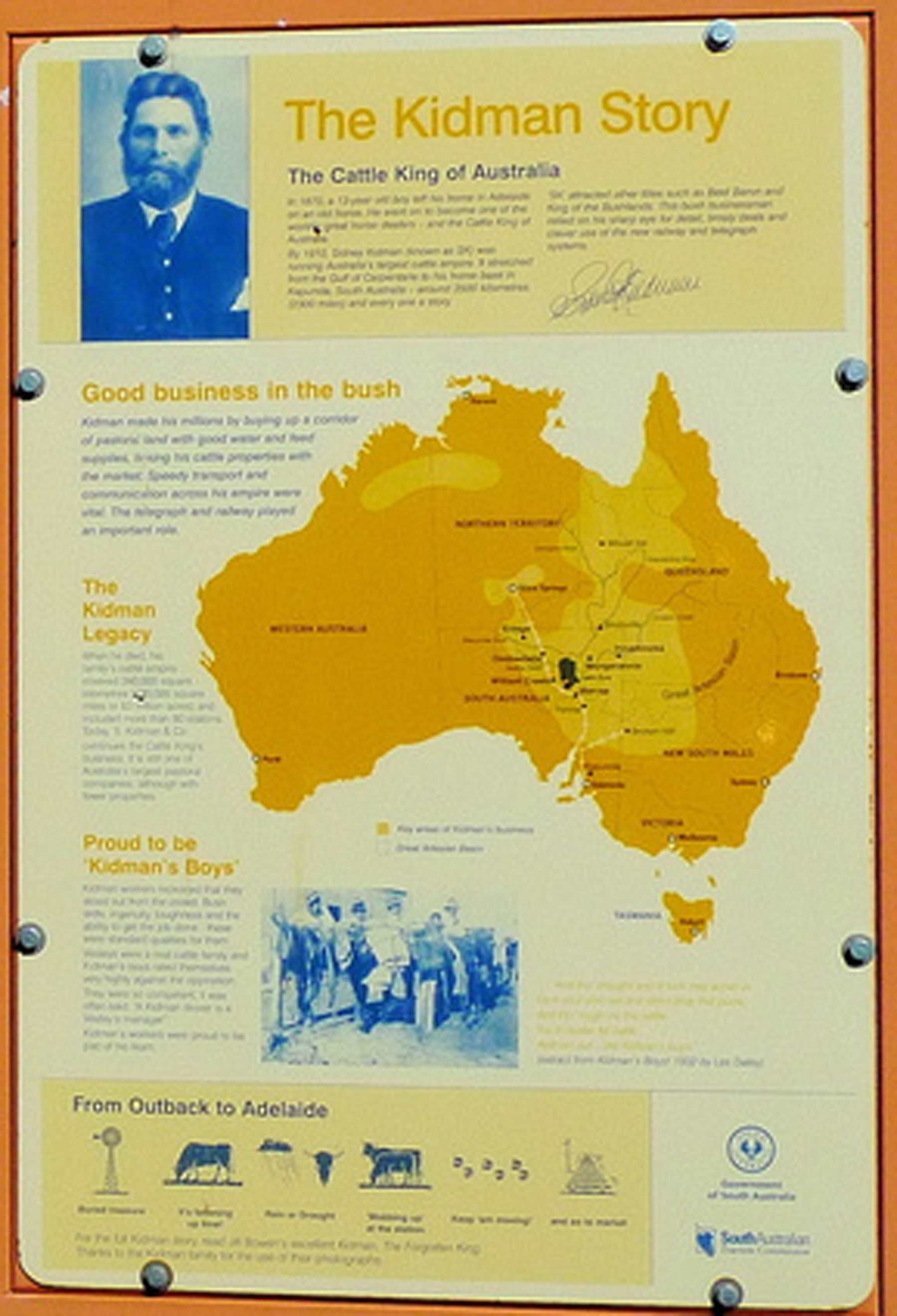Farm & Ranch
Sir Sidney Kidman “The Cattle King”

By Samantha Hall
Sidney Kidman was born in a small town in southern South Australia on the of May 9, 1857.
He was the third of three boys born to his parents who were farmers who had moved to Australia from Suffolk, England in 1849. Kidman’s father died while he was only six months old. Kidman left home not long after finishing primary school with five shillings (about a nickel) to his name and mounted on a one eyed horse. Kidman worked for drovers and graziers all across South Australia and Western New South Wales learning the ins and outs of the cattle industry and the land from both white and Native stockmen.
He even tried his hand in the shearing sheds as a roustabout. Following the discovery of copper in the western New South Wales town of Cobar in 1870, Kidman put away enough money to establish a butcher’s shop in the township to supply meat to the miners who were flooding into town.
In 1878 Kidman received an inheritance of 400 pounds from his grandfather, and he continued to work his butcher shop and began trading cattle and horses with his 400 pounds. He eventually had such an impressive string of horses put together that he was able to supply the British Army based in India with horses.
In 1886 Kidman purchased his first cattle station “Owen Springs” on the Hugh River southwest of the town of Alice Springs in the Northern Territory (right in the center of Australia). He was by then a renowned bushman and excellent cattleman who had a detailed knowledge of the country he resided on. Kidman’s land holdings continued to grow, making it possible for him to move cattle from drought affected areas to better feed and the ability to sell cattle in higher markets. Due to his expanse of land, Kidman was able to survive the depression and the otherwise crippling drought of 1902.
To read more pick up a copy of the September 2017 NTFR issue. To subscribe call 940-872-5922.
Farm & Ranch
Hazards of Backyard Poultry

By Barry Whitworth, DVM
Having backyard poultry is a popular agriculture enterprise. According to the United States Department of Agriculture, 0.8 percent of all households in the United States have chickens. People keep chickens for a variety of reasons with table eggs being one of the more common reasons.
Unfortunately, some of these poultry producers are not aware of the hazards that come with keeping poultry because many times they carry pathogens but appear healthy.
Chickens are carriers of several zoonotic diseases. These are diseases that can be passed from animals to humans. According to a recent survey in Pennsylvania, a majority of backyard poultry producers were aware of the dangers of avian influenza. However, this study also revealed that far fewer producers were aware of the risk of possible exposure to Salmonella and Campylobacter.
The lack of knowledge about the hazards of raising poultry likely contributes to the continued issues of Salmonella outbreaks associated with backyard poultry. In 2023, the Centers for Disease Control and Prevention reported 1,072 illnesses of Salmonella linked to backyard poultry, and 272 of those patients required hospitalization. Oklahoma reported 43 individuals with the disease.
To read more, pick up a copy of the April issue of NTFR magazine. To subscribe by mail, call 940-872-5922.
Farm & Ranch
Ag Elsewhere: Wyoming

By Tressa Lawrence
Babies are tucked away in every nook and cranny. Many ranchers across Wyoming have baby animals popping up all over this time of year.
Farm & Ranch
Ag Elsewhere: Montana

By Lindsey Monk
Another load of grain in to keep feeding the calves until the green grass can really start popping.
-

 Country Lifestyles1 year ago
Country Lifestyles1 year agoScott & Stacey Schumacher: A Growth Mindset
-

 Equine7 months ago
Equine7 months agoThe Will to Win
-

 Country Lifestyles7 years ago
Country Lifestyles7 years agoStyle Your Profile – What your style cowboy hat says about you and new trends in 2017
-

 Country Lifestyles4 years ago
Country Lifestyles4 years agoAmber Crawford, Breakaway Roper
-

 HOME7 years ago
HOME7 years agoGrazing North Texas – Wilman Lovegrass
-

 Country Lifestyles7 years ago
Country Lifestyles7 years agoDecember 2016 Profile, Rusty Riddle – The Riddle Way
-

 Country Lifestyles8 years ago
Country Lifestyles8 years agoJune 2016 Profile – The man behind the mic: Bob Tallman
-

 Outdoor9 years ago
Outdoor9 years agoButtercup or Primrose?






